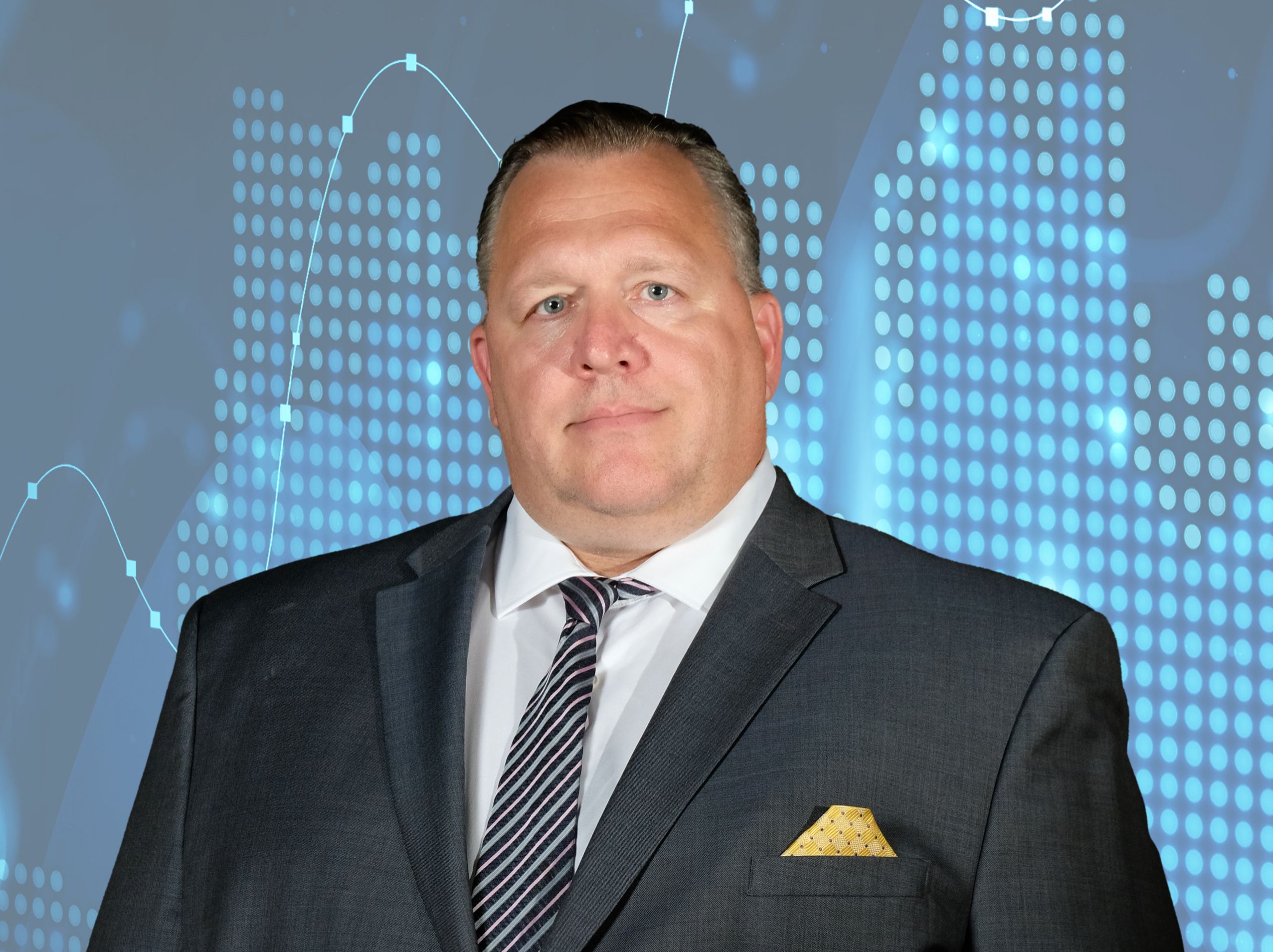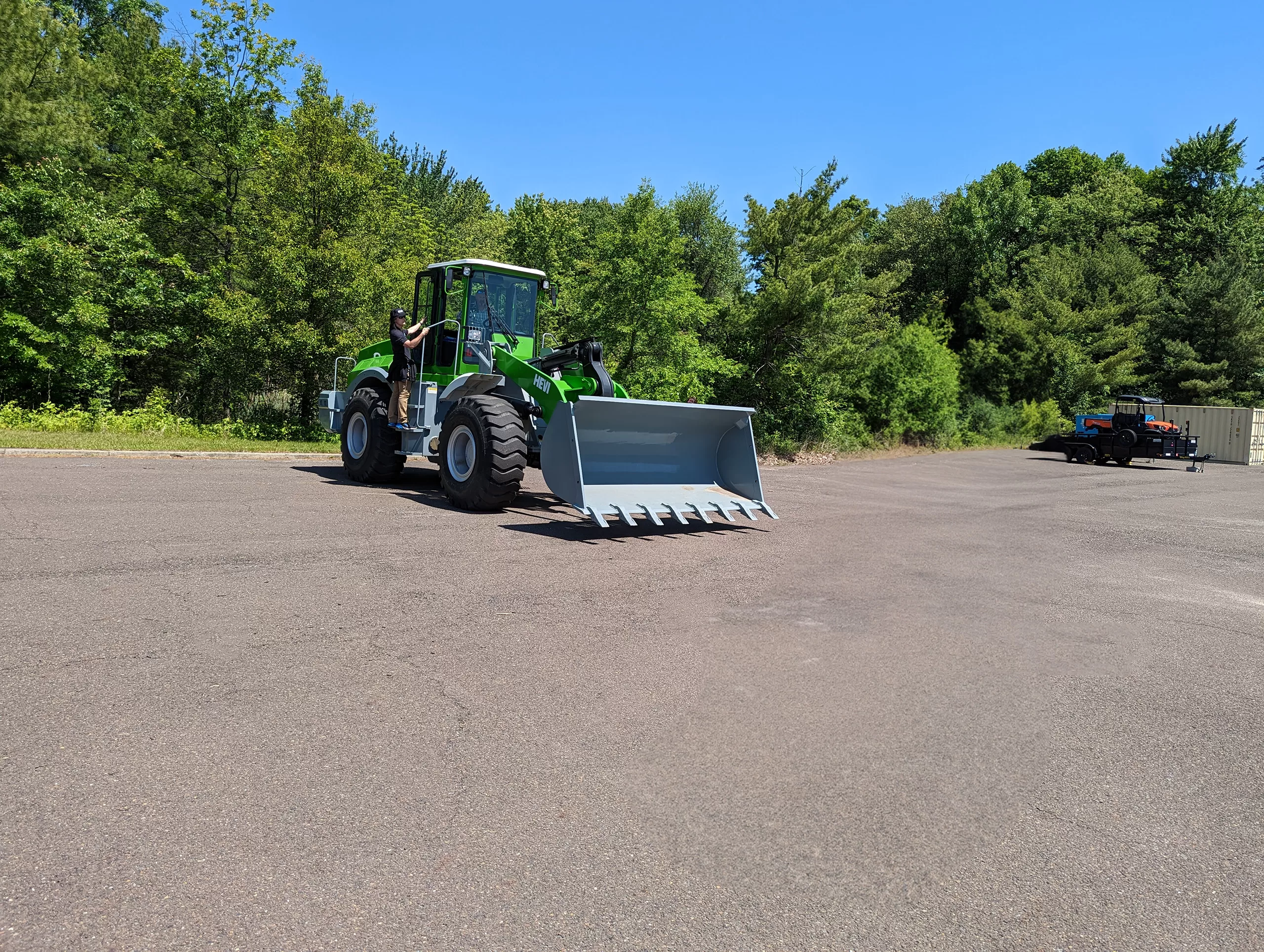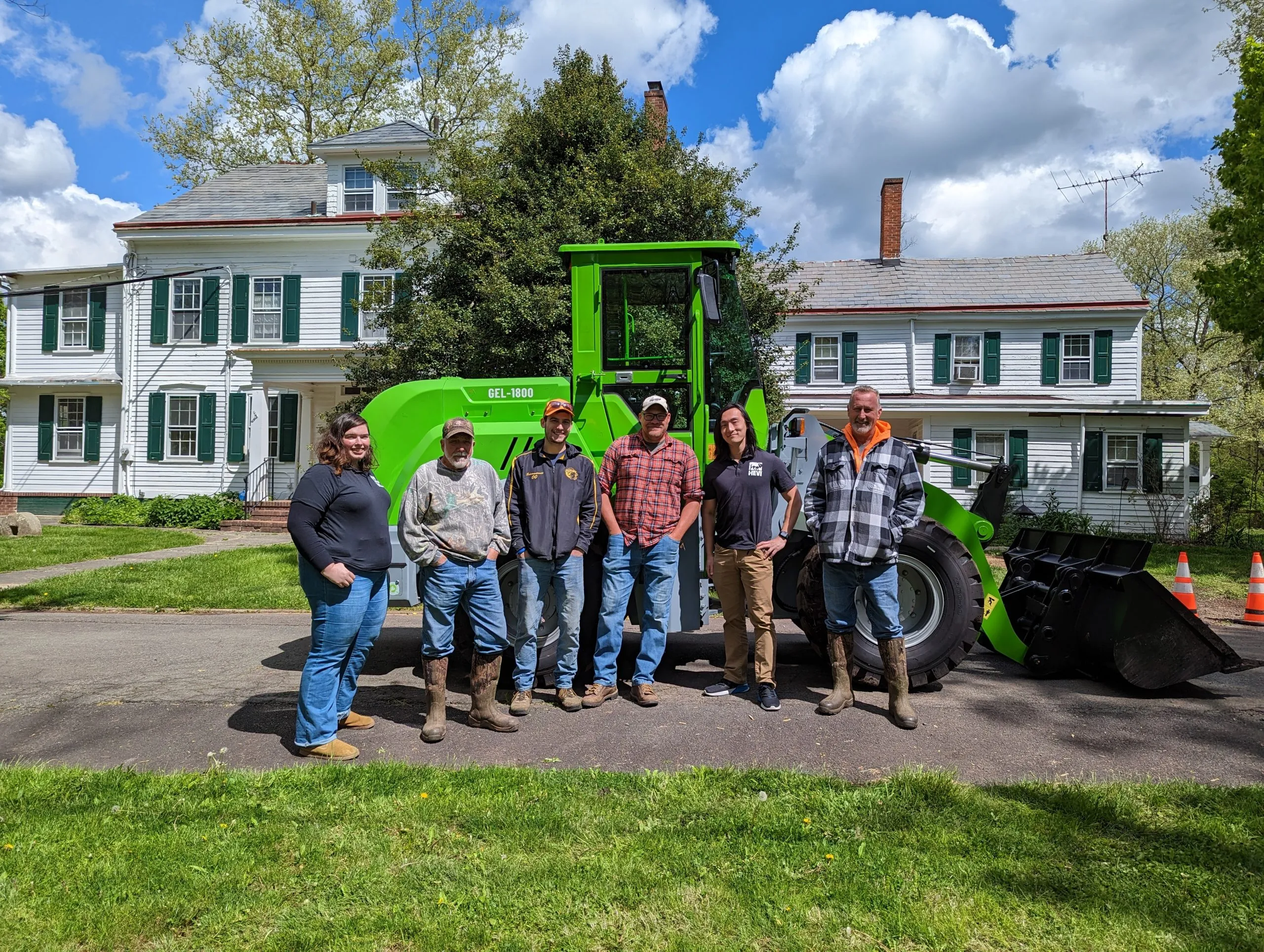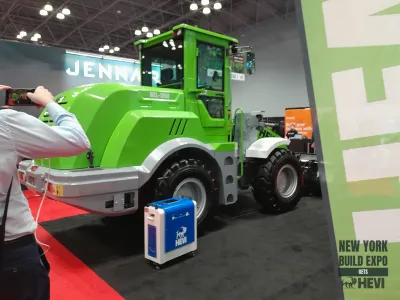Why HEVI, Why Now?: COO Dana Hopkins & Water Tower Research LLC
July 18 , 2023

On June 21st, our COO Dana Hopkins had a fireside chat with Graham Mattison of Water Tower Research to discuss the potential he saw in HEVI’s products and why he decided to join the company.
Check below to listen to the full broadcast, or read the transcript here.
Learn more about HEVI by following us on social media – we’re on LinkedIn, Twitter, Facebook, and Instagram.
Why HEVI, Why Now?
Transcript:
Graham Mattison
Hi, everyone. My name’s Graham Mattison. I’m an analyst here at Water Tower Research. Thank you so much for joining us. As a reminder, all of the Water Tower Research’s content is available to everyone and is on our website. This call is being recorded and will be available for replay and we will be following up with the management series, which is also available to everyone.
So we’re excited to have with us today Dana Hopkins, who brings nearly 30 years of leadership experience in the industrial equipment industry, see more of his background, but he’s recently joined with the companies. We’re very excited to have him here. We can- you can submit questions in via the chat function on the on the zoom, but we’ll try and get to all of them, but if time does not allow ,our apologies. So with that, Dana, thank you for joining us. And I’ll start us with the first question, if I could, which is what brought you to this opportunity here with HEVI.
Dana Hopkins
Well, it’s great question. Thank you. For me. Thank you for having me. This pretty interesting and exciting. So what initially got me was just I think with a lot of people, curiosity, just the curiosity of seeing a large piece of heavy equipment, that’s a total EV, which is just not something we’ve seen before. You know, we’ve heard tale about it coming out of your [unintelligible] or whatever, but we didn’t see the production model.
So it’s just all hearsay. So the next thing what really got me was I got to admit, the passion that Ray has for the product and the impact the product will have on the construction industry and the environment. It’s hard not to get wrapped up in that passion when you’re talking with him. So that’s what kind of made it a serious thing for me, it goes from just to novelty and curiosity over being wild was really something I feel I can get behind.
And then finally was the challenge. You know, I love a challenge and in my career I’ve had the opportunities to do startups or introductions of new technology or have come into a space. So the challenge of bringing a brand new product into a market that is so set in it’s ways, just excited me.
Graham Mattison
Great. What’s the reaction been from your friends and colleagues in the industry?
Dana Hopkins
Well, one of my friends, after me joining the company, was investing, you know, after, you know, a couple of times I had lunch with them. I was telling him about the product, the technology, he went out and bought 2000 shares. So that should tell you right there. And he is another 30 plus year industry vet that currently works for another manufacturer. But he believes in the product. He wants to be part of it.
From an industry standpoint. I’ve got two different questions why I would go from a tried and true OEM over to this. For people who don’t know me, then it’s, you know, I have to explain. But for the people who know me, they see well, he always likes a challenge. So it makes sense for him to want to be where the cutting edge is.
Graham Mattison
At actually speaking the challenges. What do you see is the challenges to growth in the construction industry, heavy equipment industry.
Dana Hopkins
Infrastructure. I think the main challenge we have is to… is charging infrastructure. To make that battery charging capability easy and portable to where …. We have it now, you know, even with our equipment, our recommendation is you either have it in a yard where you have access to power or you’re running it in an application where it’s only out in the field for a day, maybe two, and you’re bringing it back to your field.
So that really does limit opportunities overall to certain types of customers. You’re not really going to break into the larger road building or land clearing site development projects because they don’t, they do not have power on site. So having either a fixed or portable charging solution that can provide power in the field, that’ll be the turning point overall.
That’s where customers will feel all they have now be assurances that they can refuel, work, recharge their equipment in the field and run it consecutively over a long project period.
Graham Mattison
And when you’re career, like, when is – you’ve been on both sides of the of the equation, what are the most important things in buying a product? Is it price, reputation, brands, dealer support, what have you?
Dana Hopkins
The quality, value and support, you know, your quality. They need to have trust in the product that is going to function as advertised. It’s, it’s not going to break down. You value that the product will do what it’s told you will perform the job that you buy it for, but also can provide additional value throughout the company in terms of ROI on cost savings, maintenance, production, things of that nature.
And finally, support. And the old adage is “sales sells the first truck, service sells every one after that”, right? So being able to support your product with technical assistance, mechanical assistance, parts assistance and availability – very critical, because they’ll buy that equipment. You have to understand, especially in our situation, given that the applications this will operate in, if the machine is down, there’s a work stoppage.
So your customers have to be confident and your ability and your contractors ability to support that product to ensure that it’s operational and can be utilized 100% of the time or theoretically 100% of the time.
Graham Mattison
Is it important when you’re talking to customers to have the reputation of Greenland, the history in the transmission business and the components there, that it’s not just a startup?
Dana Hopkins
It hasn’t come up that much. I think when we’re talking with larger customers like a waste management, we’re in talks with a couple people like always manage battery data rentals, that’s part of the conversation as this we’re more telling the story and how HEVI came about, the genesis. But when we’re looking at more the user side, you know, we’ve been running a lot of demos and we’ve got a few more scheduled. That’s not part of the conversation. It really comes back to quality values, support, you know, can can it do the job? Can you support it, and is it going to run?
Graham Mattison
And that’s what the people on the ground care about the most.
Dana Hopkins
Yes.
Graham Mattison
And that makes a difference. So, I want to just see if it takes some questions from the audience. One of them is a sort of summary. What’s the biggest pushback or that you’re hearing from customers when you’re talking to them? What is the hurdle that you’ve got to get them over?
Dana Hopkins
It’s the battery. So right off the bat – so we ran a demo just recently, and it’s funny as we’re going on site, we’ve, we’ve put our process together with some lessons learned and we get on site one. The older gentleman says, just shaking his head right away. And I ask him, “What are your thoughts?”
He goes, “No, power. It’s got no power. No way is it going to have power.”
You know, 20 minutes later, he gets this chance to operate it – because it was you know, it was out at a DPW site – gets in, slams it right into a big pile of rocks and just start spinning the wheels. He gets out and goes, “You got the power. The power is there.”
So that’s great. So, it’s that initial perception, that initial, oh, it’s electric. You’re not going to be nowhere near there comparing it to be it be electric lawnmowers they get from Home Depot because that’s their point of reference. So once we get past that hurdle, then it’s back to the battery charging. You know, it’s what’s my battery life? What’s the overall lifetime of the battery? How am I going to charge it? And that that’s going to be the biggest challenge for us as the technology continues to develop and the infrastructure overall continues to be built out.
Graham Mattison
Makes sense. I see the other questions that are coming in; can you talk a little bit about the trends you’re seeing in the heavy equipment market? Just overall, are there some areas that are more in demand than others and maybe how that as you see that as an opportunity for EVs?
Dana Hopkins
Well, you go back to, I guess, the early 2000s with the California Air Resources Board – CARB – they came out with their CARB standards for reduction of, you know, CO2 and NOx gas that is coming out of industrial off-road equipment. You know, start out with forklifts, grew into construction equipment, further grew into buses. Then obviously what California leads with, then the East Coast adopts, and that kind of closes the gap.
So that’s kind of where we are now. So that’s where we ended up going from your Tier III diesel engines over to your Tier IV, which has the DEF filters and DEF fluid and the additional scrubbers to bring all that down. So they have improved the efficiency of the diesel engine. And they continue to do that with different types of recirculating brands to kind of feed that stuff back into the engine, burn it off a little bit more.
But now what you’re starting to see more in that industry, even before we get to EVs, is an attention to precision. Over the past three years or so, there’s been a big growth in precision construction technology, utilizing sensors on the different cutting edges, in different parts of the machines, connected to satellites or connected with local lasers to ensure that the machines are operating within a 10th of an accuracy.
So think of a golf ball – that’s a tenth, more or less, okay? So when you’re on a job site with little input from an operator, you can ensure through this technology the accuracy of plan or grade is within an inch. So now you’re starting to see that filter into bid processes to where bids are requiring this type of technology on the equipment.
Realizing the accuracy in the build is something they need. You know, they don’t want to have even slight variations in a grade or, you know, trench, or what have you, especially for laying like a lot of pipe. So the next is going to be automation. You’re starting to see automation become more of a hot topic. I think with what kind of happened with the driverless cars, that took a step back, but it’s still going to be there. And I think the automation is going to come in a little bit more when they refine the pedestrian detection systems. But now we see the EV, EV and hydrogen, right? So over the last six months, you see Komatsu, Cat, Volvo come out with their EV CnF. So construction of course there’s two classifications of construction equipment: CCV, compact equipment, that your Bobcats, your Kubotas, the little things you see like landscapers using stuff you can rent from Home Depot; and then CnF – and that’s what we’re in. The larger front-end loaders, dozers, excavators – that’s CNF equipment. So you’ve seen already some batteries in the CCV side. Not the best. There’s not a lot of room to put a lot of power in there. So you’re getting some four-hour runtimes. So that’s probably hurt the CnF side because it’s kind of generated some bad taste in people’s mouth.
So a lot of our time is spent when you’re going for a 40-kilowatt hour battery to 141- or 280-kilowatt hour battery, there’s a big difference. So there’s a lot of education and what we have to do when we’re talking to customers. But, now that we’re coming on board with EV, as I said, Komatsu, Cat, Deere, see, they’ve all pushed out they’ve all led with the tracked excavator being the number one seller in the market, the tracked excavators, what they went with, but they’re not in production yet.
They’re still in that R&D pre-production. So they’re probably two years out before they’re ready for retail market retail orders.
Graham Mattison
Wow. That’s a – and is that just in terms of for those guys, the technical development or just the whole industry being so backed up and getting to build slots or a combination of both.
Dana Hopkins
Combination. But you also have to see that the Deere and all those other groups run a traditional dealer market, right? They have a dealership model, so don’t produce it, don’t go through their R&D testing. Then they’ll send it out to a select group of dealerships to do R&D field testing and put together a customer advisory board who will then have input back into the manufacturer to make changes and make changes, put it back out.
And then once they come up with their product that they are good with they launch it to their dealers, all their dealers will have to go through sales training, technical training. So they’re going to put all of, check all the boxes before the first one hits the field and that takes time. And then also they’re going to have to sell the dealer.
So think about it. What does a dealership make its funding on any car dealership, construction.
Graham Mattison
Service service, bike shop, same thing.
Dana Hopkins
Exactly. They make their money on parts and service. You know, you’ll make 8% margin on a new truck sale. You’ll make a 47% blended margin on parts and service. EV vehicles reduces the cost of operation 70%. So where is the incentive for dealerships to push EV? That’s why we’ve elected to go to a direct market. We’re pushing that direct-to-consumer and putting together a network of authorized service providers that we will support.
That way we can ensure that we’re delivering the product to the right customers when they need it, where they need it.
Graham Mattison
As the customer. When you’re out talking to people, they they prefer that. And I guess what’s their take on a direct-to-consumer model versus the dealers?
Dana Hopkins
It all comes back to the same from the same three things: quality, value, support. If I could show them those three pillars, you meet them? They don’t really care too much how they get it.
Graham Mattison
Just so long as you can hit on those.
Dana Hopkins
Things, as long as long as it’s quality, value, support. As long as I can prove those three and provide that to them, it doesn’t really matter.
Graham Mattison
Yeah, no other questions come in right now. Heavy has three products the loaders, excavator and forklifts. Where do you see the best growth potential and are there opportunities to expand the line?
Dana Hopkins
So where we’re seeing them right now, a lot of feedback we’re getting is in our five – our our larger loader – has a lot of versatility. We have been that’s been demoed too many places. It’s more of a finished product at that level. So I think our initial success is going to be out of that GEL-5000 into a lesser 1800.
Dana Hopkins
Our current excavator, a wheeled excavator. So in the market it’s pretty niche. Europe, they’re more popular than they are in the US. By the end of the summer, we’re looking at launching our tracked excavator. So it’s going to have a rubber track or a steel track with a veteran case that’s going to open up different markets and then that’ll open up our ability to install great management precision construction onto that unit, which will then open up utility work, when people need to do pipe work and they’re digging their trench, or they’re building out slopes or something, that’ll help us get into that market.
Then I think the next thing we will need to look at investing into would be a backhoe. Backhoes are the number one seller in the construction equipment industry in the CNF market. With a backhoe that opens up an array of different customer types, but most importantly, utilities. A lot of utilities companies and a lot of township utilities use a backhoe because of the versatility between that bucket on the front end and the excavator on the back end.
Graham Mattison
And that’s one of your core markets that you guys are looking at that going after that. So the municipal construction area, and again, those are areas that the incentives are there as well.
Dana Hopkins
The incentives are there in the application. So they’re not going to run these units very hard and they’re normally attached to a depot. So they may go out for a couple of days and then they’ll come back. So that also fits in to having the charging infrastructure that we provide with our own chargers. Being able to support that equipment, keeping it charged.
Graham Mattison
And then you’ve got the back to base there. So it’s a it’s a perfect application to get it started.
Dana Hopkins
Right.
Graham Mattison
Got it. All right. Well, we’re coming up at the end of our time and they know you’re busy. So thank you so much. One final question: What do you see is your biggest challenge from your seat on the operational side? And then also, what are you most excited about?
Dana Hopkins
Our biggest challenge is time. I joked with Ray, I said, I wish I was there 12 months ago. I’d feel a lot better. I have two years. I have two years. When I tell my team and when I tell Ray, we’ve got two years to get enough product in the market, get enough positive feedback on our three pillars – quality, value and support – to get a seat at the table.
I mean a seat at the table, we are part of the changes that are now taking place, the discussions about infrastructure and the value of moving to market. Two years. We have five years to position ourselves as a more dominant player in the space and to look at the next technology, whether it be hydrogen or something else.
So we can now continue growth as the technology continues to develop. The infrastructure is being built out. We’re part of that. And what I’m most excited about, well, right now, right now I’m most excited about my team. I have a group of young people, passionate, hungry people, who are immensely coachable, which is great for me. We’re building our sales team, we’re building out our operations team, I’m imparting the knowledge I have, and I’m looking at hiring a few other key people to fill some roles.
And I really enjoy seeing this passionate group of individuals and it being a young market, it’s a young technology, which is kind of funny because even when we do our demos, we do see a generational gap in willingness to adopt technology. Where the older gentleman who have been operating diesel machines for ten years, 15, 20 years. I admit I was part of that initially.
They’re very reluctant, doesn’t have the power to pick the part. I’m worried about the barrier. I’m not used to how the traction motor works compared to the diesel. You get a younger person in there, big jump, jump on for a couple minutes of acclimating themselves. They’re tooling around the yard, doing the job. They get out and say, Hey, it’s nice, I like it.
So I feel having a younger team, a young, passionate team, really carries our our message and our brand, being a technology that’s going to be adopted by our younger and our future operators.
Graham Mattison
Yeah, that makes sense. And one of the things that you guys, that Greenland in general, has an advantage is that you’re a very stable, strong cash flow, positive business. On one hand it gives you that time to grow. So it’s an exciting runway out in front of you. So. Well, thank you so much for joining us. Appreciate it and look forward to talking with you soon.
Dana Hopkins
Thank you very much. I had a good time.
Graham Mattison
Thanks.
Dana Hopkins
Bye.



